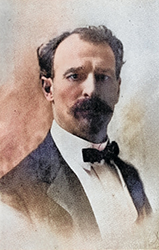CHAPTER 16: Two Sides of the Cuban Saga: Repression and Resistance
Despite the fact that most Cubans had little or no internet access, a significant number of locally generated blogs and portals popped up on the island. Most were tolerated by the regime because they avoided directly challenging the government. However, the government has not hesitated to take action against bloggers and other journalists who report on topics deemed sensitive.
According to Freedom House, an international organization promoting democracy, those actions by the Cuban government included «short-term detentions, beatings, threats against journalists and their family members, internal deportations, house arrest, ‘public repudiations,’ and demotions.»
The Castro regime announced in December 2018 that it would offer the population internet access for mobile phones. The problem is that the price of the 3G service to be provided in stages by the government telecommunication agency (ETECSA) is out of reach for most Cubans. Still unknown is the degree of censorship that the government apply and the number of sites that it will block.
Despite these drawbacks, Cubans are now increasingly using social media to air their grievances. The Castro regime, however, has not remained idle. On July 4, 2019, it issued a decree prohibiting Cubans from running websites hosted outside the country. The decree dealt a heavy blow to the island’s growing independent media sector, where most of the media sites and blogs use foreign hosting services and blogging platforms.
But what generated greater opposition was the July 29, 2019, law stipulating that the state would take control of the largest private network, SNET, which does not rely on the internet but on wireless connections and cables strung between houses and buildings. Observers say it has more than forty thousand users in Havana, who mostly use it to play games or discuss sports. Mounting protests were harshly repressed by the government.
The Defiant Opposition
The most daring militants, who face not only repression but also brutal imprisonment and death, are the nonviolent human rights activists who take a public stand against injustice and oppression, regardless of the risks.
One of the early resistance heroes who died in prison, defiant and undaunted, was Pedro Luis Boitel. A young, charismatic student leader, Pedro fought against Batista and initially embraced the revolution. However, given his Christian belief and anti-Communist stance, he was seen as a threat to the Castro regime and was sentenced in 1961 to ten years in prison. Having rejected Communist «rehabilitation,» he was kept behind bars after his sentence had ended. In protest, he went on a hunger strike. After fifty-three days of receiving only liquids and deprived of medical assistance, he died of starvation in 1972. He was forty years old.
His stirring example inspired others to brave the Castro onslaught and not to yield. One of the most recent stalwarts was Orlando Zapata Tamayo, a forty-three-year-old modest but resolute bricklayer who died in prison.
Then in October 2011, Laura Pollan, a former teacher and relentless human rights campaigner, age sixty-three, fell ill following a beating by a vicious government-instigated mob when she was peacefully demonstrating. She was taken to a hospital and died shortly after being admitted. Since the regime hastily cremated her corpse without performing an autopsy, as her family had requested, suspicions abound as to the cause of her death.
Laura’s story is engrossing and inspiring. When her husband, Hector Maseda, and seventy-four other stalwart dissidents were arrested in March 2003 in an island-wide crackdown known as Cuba’s Black Spring, she and other women whose loved ones also had been jailed organized a simple act of protest. Every Sunday, after attending Mass at Santa Rita Church in the suburbs of Havana, they marched in the street, dressed in white, symbolizing the purity of their cause. The women, known as «Damas de Blanco» (Ladies in White), are disciplined and nonconfrontational, but the regime grew restless and ordered its trained thugs to vilify and attack them. Video entries posted on YouTube and reposted on other websites show how the unflinching Ladies in White were mauled, punched, kicked, and even bitten by the goons.
Under great international pressure, the regime finally agreed to release Laura’s husband and the other seventy-four dissidents of the Black Spring. Most of them, however, were deported to Spain. Not satisfied with the outcome, Laura and her Ladies in White decided to continue marching with their single-stem gladioli as long as other freedom-loving Cubans remain behind bars and as long as the regime retains the arbitrary power to fill the prisons again without due process of law.
Another stalwart dissident, Wilmar Villar, died on January 19, 2012, after staging a hunger strike to protest incarceration. Hejiad’heen convicted of «contempt» for resisting arrest when he participated in a peaceful demonstration in eastern Cuba. Weakened by cruel treatment in prison—he had been placed naked in solitary confinement in a small, cold cell—and by his seven-week hunger strike, Wilmar succumbed to pneumonia at a hospital to which he had been belatedly transferred by the local authorities.
The leading international human rights organizations sounded their outrage, and the White House issued the following statement: «Wilmar’s senseless death highlights the ongoing repression of the Cuban people and the plight faced by brave individuals standing up for the universal rights of all Cubans.»
A few months later, in July 2012, the internationally renowned Cuban activist and leader of the Christian Liberation Movement, Oswaldo Paya, was killed in a car crash in the far-eastern province of Cuba under suspicious circumstances. A young human rights fellow activist who accompanied him, Harold Cepero, also died in the crash.
The Castro regime claimed that the driver of Paya’s car, a member of Spain’s Popular Party who supported Paya’s movement, imprudently slammed the vehicle into a tree, killing Paya and Cepero and injuring himself and a Swedish passenger, who also backed the prodemocracy cause in Cuba.
Paya’s wife and daughter, however, challenged the government’s version, saying that they had received reliable information that the car was repeatedly rammed by another vehicle. «So we think it’s not an accident,» they emphasized. «The government wanted to do harm[,] and they ended up killing him.» The family also disclosed that Paya was targeted in a similar incident a few weeks earlier in Havana.
The Spanish survivor, under duress, toed the government’s line, and the Swede alleged he was asleep. Only then were they released by the authorities and allowed to leave the island.
After they recovered, back in their respective countries, they recanted their previous testimonies and corroborated the ramming of the vehicle denounced by Paya’s family. Despite international pressure to permit a thorough and independent investigation of the suspicious circumstances surrounding Paya’s and Cepero’s tragic deaths, the Castro regime has adamantly blocked such an investigation.
The mourned dissident leader, a sixty-year-old engineer and devout Catholic, founded in 1987 the Christian Liberation Movement, which called for civil liberties and national reconciliation. Despite the terror prevailing in Castro’s police state, Paya managed to launch a campaign known as the Varela Project. Backed by twenty-five thousand courageous militants, he petitioned the Castro regime to guarantee freedom of speech and assembly, and allow the Cuban people to decide in a national referendum, with international supervision, if they wished to install a multiparty democratic system of government under the rule of law.
In recognition of Paya’s work and of the harassment he suffered for defending his noble ideals, the European Parliament awarded him its Sakharov Prize for Freedom of Thought in 2002. He was nominated that year for the Nobel Peace Prize with the endorsement of world personalities including Vaclav Havel, the Czech president. Given the traction that Paya’s movement was starting to gain, it seems that Castro decided to nip it in the bud by cutting down its leader.
Orlando Zapata-Tamayo, Laura Pollan, Wilmar Villar, Harold Cepero, and Oswaldo Paya are gone, but their inspiring examples live on. Civil resistance, while not yet a threat to the Castro regime, is picking up, and the calls for freedom are echoing across the island. Despite seemingly insurmountable barriers, the new media is starting to play a role, although limited, in spreading the narrative, firing up dissent, and increasing connectivity.
Even some of the regime’s own supporters who enjoy government perks, including artists, economists, and writers, have begun to speak up in favor of more openness and less uniformity dictated from above.
Among the boldest and most highly respected dissident leaders who remain at the forefront of the prodemocracy human rights movement are Berta Soler, the current torchbearer of Damas de Blanco; Guillefmo «Coco» Farinas, who went on a drawn-out hunger strike in defense of political prisoners and was awarded the 2010 Sakharov Prize for Freedom of Thought; and Jorge Luis Garcia Perez («Antunez»), jailed for seventeen years and known as Cuba’s Nelson Mandela.
Oswaldo Paya’s daughter, the talented and courageous Rosa Maria Paya, apart from demanding an independent investigation of her father’s suspected assassination, has launched a movement, Cuba Decide, calling for an internationally supervised prodemocracy plebiscite. This initiative has received the backing of many of those in Cuba who had joined her father in his quest, as well as the support of various international personalities.
Among other renowned activists, the one who seems to be leading the largest grassroots
organization, mostly in the eastern part of the island, is Jose Daniel Ferrer. He was one of the seventy-five political prisoners jailed in the 2003 crackdown known as Cuba’s Black Spring. After being freed, Ferrer founded the Cuban Patriotic Union (UNPACU), which not only organizes street protests but also lays the groundwork for a political party that aspires to play an important role in a democratic transition. In October 2019, he was again arrested by Castro security forces, held incommunicado for one month, and reportedly tortured. As of this writing, no charges have been filed against him.
Also prominent in the struggle for freedom is the forty-one-year-old Cuban physicist Antonio Rodiles who, after spending twelve years studying in Mexico and the United States, returned to his homeland and founded For Another Cuba. This movement demands that the Castro regime ratify the UN International Covenants on Human Rights, taking inspiration from the 1975 Helsinki Final Act, which gave impetus to the triumphant Velvet Revolution in Czechoslovakia. While participating in a peaceful demonstration in Havana in 2015, Rodiles had his nose fractured by one of Castro’s henchmen.
One of the most prestigious and unyielding opponents of the Cuban dictatorship is Oscar Elias Biscet. Biscet is a fifty-year-old physician and the president of the Lawton Foundation for Human Rights. He follows the nonviolent teachings of Mahatma Gandhi and Martin Luther King and calls for intensifying civic resistance to end the Castro regime and uproot its totalitarian apparatus.
After numerous detentions in 1998 and 1999, he was arrested and given a twenty-five-year sentence in 2003 during the summary trials against the seventy-five Black Spring dissidents. While Biscet was in prison, President George W. Bush awarded him the Presidential Medal of Freedom. Released in 2011 after having been held for eight years in a tiny cell, often tortured and kept incommunicado, Biscet has vowed to continue his crusade regardless of the risks














0 comentarios